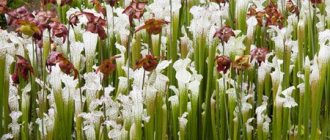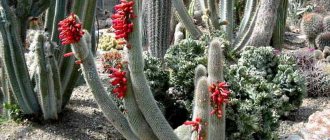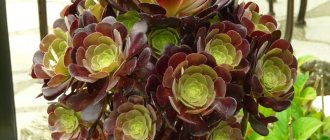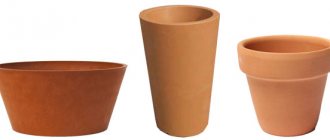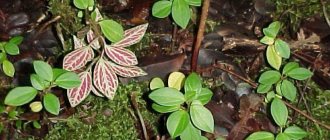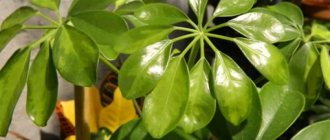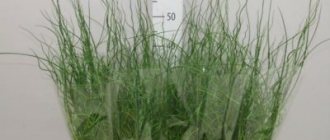It often happens that in an interior decorated with indoor plants, the green color predominates and lacks something bright and extraordinary. In this case, stromanta is exactly what is needed. Spectacular leaves with original colors will certainly attract attention, since the pattern on their surface is striking in its perfection. Stromantha is an undeniably attractive, but very capricious houseplant. However, if you follow special care rules and provide the sissy with suitable conditions, it can delight you for many years, especially since its foliage with an expressive pattern of longitudinal stripes, spots and stains of pink, purple, yellow, cream and vanilla shades is incredibly decorative.
Description and origin
Stromantha is a very spectacular plant
The plant's habitat is damp and swampy areas of South America, Africa and Asia. Tropicana is very moisture- and heat-loving, so growing it “in captivity” is fraught with difficulties.
All plants of the Marantaceae family have very expressive leaves. It is thanks to the brightly colored foliage in the most incredible shades that the flower is highly valued by experienced gardeners.
Close relatives of the plant are ctenantha, arrowroot, calathea, and stromanta is often confused with the latter. The main differences are the structure of the leaf blade and the size of the bush. Calathea leaves are larger (up to 30 cm in length) and have an elongated oval shape. In turn, stromanthus is slightly smaller and, unlike its “relative,” its leaves are slightly pointed and, as a rule, painted in a bright crimson or beetroot shade on the underside.
Stromantha is a herbaceous perennial, reaching a height of 30 cm to 1 m or more. The shape of the chic foliage is elliptical or lanceolate. The plant resembles a half-opened fan formed by painted leaves on long petioles. The top of the leaf blade is decorated with thickened lines of a lighter shade with whitish spots, and the underside and petioles are painted in one of the shades of red (purple, burgundy, beetroot or bright crimson). The flower looks picturesque thanks to the bold combination of different shades.
During the day, the stromanta changes the arrangement of the leaves in the plane several times, lifting them in such a way that the flower suddenly transforms and becomes incredibly elegant. “Getting ready for sleep,” the leaves of this amazing plant begin to rub against each other, making a slight rustling sound. It is for this reason that Stromanta is called the “praying flower” or “pagan prayer.”
Under natural conditions, during the flowering period, Stromanthe appears a long peduncle strewn with small white flowers surrounded by scarlet bracts. However, “in captivity” the plant blooms extremely rarely, so it is unlikely that it will be possible to wait for this event at home.
“In captivity” stromanta blooms extremely rarely
Species diversity
Botanists distinguish 13 species in the genus Stromanthus. But only two of them are most widespread in gardeners’ collections: blood-red and pleasant; it is from these plants that breeders obtain new interesting cultivars, varieties and hybrids.
- Stromanta is nice. The habitat of this species is South America, or more precisely, areas with tropical rainforests. This is a low compact bush up to 25–35 cm in height. The leaves are 15–20 cm long, have a regular oval shape and are colored light green with dark green stripes. The underside of the leaf blades is grayish or silvery-green.
- Stromantha blood red. This species is native to Brazil. The flower is larger than Stromantha pleasanta (adult specimens reach one meter). The leaf blades are pointed and elongated, their upper side is bright green with variegated dark green stripes, and the lower side is purple.
Modern hybridizers have developed several ornamental varieties with bright and expressive foliage. Among them:
- a very impressive variety Triostar (Tricolor), the dark green leaves of which are painted with stripes of cream, salad and pale pink shades, and on the reverse side the leaf blades are burgundy;
- Multicolor - a plant whose leaves are covered with all kinds of stains and spots of light green, cream or white on a dark green background;
- Maroon, the distinctive feature of which is a pronounced vein of a light green hue, located in the center of the bright green leaf blade. The reverse side of the leaf surface is burgundy or purple.
Photo gallery: variety of species and varieties of stromantha
Stromanta multicolor amazes with its original colors
The dark green leaf blades of the Tricolor stromanthus variety are painted with stripes of light green and pale pink shades
Stromantha variety Maroon has a pronounced central vein of a light green hue.
A distinctive feature of this species is the red coloring of the underside of the leaf blade.
Stromantha pleasant - low bush
Features of cultivation
The stromanthus flower is a herbaceous perennial, reaching one meter in height in nature. The main advantage of the plant is its very beautiful large leaves, up to 50 cm in length and up to 10 cm in width, painted in cream, pink, white and green colors in all sorts of combinations. The leaves are connected to the petioles by such an articulation that allows them to turn towards the light source, in whatever direction it may be.
- Aeonium at home: care and types
Stromantha has the same feature as all arrowroots - its leaves fold and rise up in the evening and open, descending, in the morning. For this reason, all arrowroot plants, including stromanthus, are called praying plants.
The indoor stromanthus plant is very demanding to care for, and this often repels those who want to purchase it. Nevertheless, such a task as growing stromanthus can be easily accomplished if you understand the nature of this plant. In its natural habitat, stromantha grows along the banks of reservoirs, where the South American climate is always warm and damp, and the soils are loose and breathable. Stromanta grows in the forest at a level where direct rays of the sun almost never reach due to the closeness of the crowns of tall trees, so the plant is content with bright but diffused light. However, the duration of daylight hours in those latitudes is longer than in our climate zone.
Based on these characteristics, conditions should be created under which an indoor stromanthus flower will feel at home. The best place for small species of stromanthus is in terrariums, and for large ones you can create the necessary conditions on the windowsill.
Growing conditions - table
The sight of a beautiful and healthy flower brings true aesthetic pleasure. And for this you need to know some of the sissy’s preferences.
| Conditions | Recommendations |
| Temperature | Stromantha prefers warmth. In winter, not lower than 18–20°C, and in summer, not higher than 25°C. It does not tolerate drafts and sudden temperature changes (in such conditions, root rot begins). |
| Lighting | Stromanthe needs good, but diffused lighting (in the shade the color is lost and the leaves become evenly colored). If the light is too intense, stromanthus, on the contrary, acquires a reddish-brown tint, and burns appear on the leaves. In winter, the flower requires additional lighting, which can be provided with fluorescent lamps. |
| Humidity | Loves high humidity (up to 80–90%). This can be achieved by regular spraying or by placing the container with stromanta on damp moss or on a tray of pebbles filled with water. In addition, it is necessary to regularly wipe the leaf blades with a damp sponge. To maintain high humidity, it is also recommended to place the plant in a florarium or grow Stromantha in a bottle garden. |
Types of stromanta for the home
In total there are about 10-13 plant species. The most commonly grown stromanta is pleasant and blood-red.
| Kinds | Description |
| Pleasant | The height is about 30-35 centimeters, the length of the leaves is 15-20 centimeters, the width is about 4-6 centimeters. The leaf blade has an oval shape. The leaves are light green on top with darker herringbone stripes and oblong in shape; the bottom is olive green with some purple added. The reverse side of the leaf is silver-green. The flowers are inexpressive. Blooms in spring. |
| Blood red | The height is approximately 40-50 centimeters, the length of the leaf depends on room conditions and is about 20-40 centimeters, the width is up to 10 centimeters. Unlike the previous type, it has a pointed shape. The herringbone pattern is slightly darker than the main shade of the leaf. On the upper side there is a pattern similar to the letter V. The lower side is colored pink-purple. The inflorescence is a spike. The flowers are inconspicuous. |
| Yellow | Grows up to 2 meters. At the same time, the leaves reach only 35 cm in length; many stems are visible, branching upward. The flowers are bright yellow and appear in winter. |
Breeders have bred many decorative hybrids from the blood-red species, some of the brightest among them:
| Varieties | Description |
| Tricolor | It has a very bright, festive color. The dark green leaf is painted with stripes and spots of olive, beige, light green, white and pink. The underside is dark burgundy. |
| Multicolor | On the dark green tone of the leaf surface, randomly lying spots and stripes of delicate pastel shades from cream to white are visible. The reverse side is burgundy-red. |
| Horticolor | Light yellow, emerald and light green stripes are located on the upper side of the leaf. Its lower part is dark red. |
| Maroon | The central vein is light green, clearly visible on the rich green leaf blade. Its lower part is burgundy. |
| Stripe Star | Chaotic white veins on a dark green leaf. |
Features of planting and transplanting
Replant young Stromantha annually. If you are not going to divide, then it is better to transfer the flower from the old container to a larger one, lightly shaking off the soil. Spread the roots from below a little and plant the stromanta in a pre-steamed soil mixture, without deepening the root collar or compacting the substrate too much.
Spring is the best time for the procedure. There is no need to disturb adult plants often, so replant them every 3 years if the container becomes too crowded and the roots appear from the drainage holes. The rest of the time, it is enough to occasionally replace the top layer of soil in the container. To do this, remove the old soil to a depth of about 3 cm, cover it with fresh substrate and lightly moisten it.
If you need to replant a stromanta purchased in a store, first inspect the flower for pests and rinse the foliage well under a warm shower. Then remove from the container and immerse in a solution of any biostimulant. The drugs Epin and Zircon have a good effect. Replant plants purchased in winter, autumn or summer using the transshipment method, being careful not to injure the delicate roots.
Young specimens require annual replanting
Preparing the substrate
Stromanthe needs a loose nutritious soil mixture, it should be light and high in organic matter. Prepare it from leaf soil (the top layer from under the birch tree), peat, and humus. Use all ingredients in equal proportions. Add a little sand to the soil (1/2 part is enough) and charcoal, which will absorb excess moisture in the substrate and return it when the soil dries out. Thus, you will have an air- and moisture-permeable mixture suitable for good growth of capricious stromanthus.
For greater moisture capacity and looseness, some gardeners recommend adding pieces of sphagnum moss.
The soil mixture must be disinfected before use. This is done in two ways: by steaming the substrate or scalding with boiling water. The first method is the most effective. Place the soil in a colander, previously lined with gauze, cover the container with a lid and place it on a saucepan in which water is boiling. Keep in a water bath for 15 minutes and sprinkle the steamed substrate to dry on a sheet of newspaper. When using the second method, each component must be doused with boiling water until completely soaked. After this, the soil should be sprinkled in a thin layer on a sheet of paper, lightly dried in air and the ingredients recombined.
For planting and replanting stromanthas, you can buy soil for arrowroots in a specialized store. Palma substrate is also suitable, but you need to add a little peat soil to it.
Stromanthe requires a loose nutrient substrate
Selecting a container
The container for planting stromanthus needs to be wide and not very deep (its shoots grow wide and the flower will quickly fill the entire surface of the earth in the container). When transplanting into a larger pot, stick to the basic rule, choosing a maximum of 2–2.5 cm larger than the previous one.
The container needs to be shallow and wide
Planting and transplanting - step-by-step description
- Although Stromantha loves high humidity, excess water should not stagnate in the pot. To remove it, you need good drainage. To do this, place a layer of expanded clay, gravel or broken brick at the bottom of the container, add coarse sand on top, which will fill all the voids and prevent soil from washing out.
- Place the substrate on the drainage layer so that there is approximately 1–2 cm between the roots of the stromanthus and the stones. Lightly moisten the soil.
Place a layer of expanded clay, gravel or broken brick at the bottom of the container
- Moisten the soil in an old container with stromanta well, crimp the pot and remove the plant.
- Shake off the substrate and carefully rinse the roots under the tap. Cut off damaged ones.
Shake off the substrate and carefully rinse the roots with warm water
- Place the stromanta in a new container and spread the roots on a moistened substrate.
- Carefully fill any voids with soil without compacting it. Water the substrate. When the soil settles, add more soil.
- Observe the condition of the transplanted plant for two to three days. If the stromanta is not feeling well, the leaves are drooping, the color has faded, then spray it and put it in a plastic bag. In such a mini-greenhouse, the flower should take root faster.
Home care
Watering and spraying
Stromanthe requires quite abundant watering during the active growth of green mass in spring and summer, and in the autumn-winter period it should be halved (excessive moisture at low temperatures will lead to root rot). It is very important to prevent the earthen ball from drying out or becoming waterlogged, since both drought and excess moisture have a detrimental effect on the flower.
The condition of the soil should be monitored daily. When the top layer of the substrate dries only 1 cm, the stromanthus must be watered with warm, settled water.
Any water (spring, melt, rain or drinking from the tap) must be allowed to settle for several hours. As a result, some of the salts will precipitate, while the water will be saturated with oxygen and become softer. Thus, the soil will become less alkalized and the stromanta will become less capricious and will thank you with a bright appearance. Experienced gardeners recommend standing water in an open container with a wide top so that the chlorine evaporates from it.
It is not advisable to leave water for irrigation for more than two days, as it may begin to deteriorate.
Stromantha should be sprayed daily, and on hot summer days this should be done at least twice a day, since humidity is a vital condition for the flower. Please note that you should not spray the plant during the day, as it can get sunburned .
Fertilizing: how and with what to fertilize a flower depending on the season?
During the period from April to August, fertilize with liquid complex fertilizer for decorative deciduous plants once every 2 weeks. Bona Forte or Fertika preparations, which contain all the macro- and microelements required by the flower in an optimal ratio, have a good effect.
Dilute the fertilizer in accordance with the manufacturer's recommendations. Before fertilizing, moisten the soil, and after a few hours, water it with a nutrient solution. From time to time, you can arrange foliar feeding, for which you need to dilute the fertilizer in half the dose and spray it on the leaves from a spray bottle.
It is recommended to alternate fertilizing with minerals and organic ones. You can use ready-made liquid fertilizer - humate or make an infusion of mullein (it must be filled with water and allowed to ferment for a week). Then the concentrate should be diluted in a ratio of 1:10 and one or two tablespoons of the solution should be added to the substrate (depending on the size of the container). In winter, feeding should be stopped completely.
After transplanting into fresh nutrient soil, Stromanthe does not require feeding for 1 or 1.5 months.
Stromantha at home - video
Proper plant care
Stromantha is a plant that needs attention every day. It does not have a rest period, so care does not change throughout the year.
Watering
The flower is watered often and abundantly as soon as the top layer of soil dries. Both lack and excess of moisture are equally destructive for stromanta. In summer, you will most likely have to water daily, in winter - every 3-4 days. Additionally, leaves on both sides and the surrounding air are sprayed.
Water is used from melted water, rainwater or passed through a filter, heated so that its temperature is 2–3 ºС higher than in the room. If the water is left to settle, it should be left for at least 2 days and with the obligatory addition of citric acid (to soften).
You can try a shower or a “sauna” if the stromanta does not “speak out” against changing places. Once every 10 days, the pots are left for 15–20 minutes in the bathroom, where steam has been previously released, or they are placed in the bathtub and doused with water from the shower. Then allow the water to drain within 2 hours and return the pot to its original place.
Fertilizer application
From approximately mid-April until the end of autumn, stromanta is fed with complex mineral fertilizer for decorative leafy indoor plants every 12–15 days, reducing the concentration recommended by the manufacturer by 1.5–2 times. The flower reacts sharply negatively to overfeeding, especially with calcium. Choose a fertilizer that contains minimal or no calcium. Ideally, you need to purchase fertilizers designed specifically for arrowroot.
Important nuances of caring for stromanthus - video
Possible errors in care
The stromanta immediately signals to the grower any actions or circumstances that do not suit her by deteriorating her appearance. It takes quite a long time to recover, so you need to strictly follow the recommendations regarding the maintenance of the flower and know what to do if problems arise.
Problems during cultivation and ways to solve them - table
| What happens to the flower? | Probable Cause |
| The leaves turn yellow and dry out, starting from the tips. | The plant stands in direct sunlight. Rearrange the pot or at least shade the flower during the hottest hours (from 11:00 to 15:00). |
| The leaves curl into tubes and are covered with light spots. Over time, these areas become translucent. | The soil in the pot dries out due to too infrequent or insufficient watering. |
| Only the tips of the leaves dry out and the flower stops growing. | This usually happens in winter, since running radiators and other heating devices dry out the air greatly. If regular spraying is carried out, carefully (with a magnifying glass) inspect the flower for damage characteristic of spider mites. |
| The petioles lose their tone, the leaves fall to the ground, fade, and then fall off. | This is due to excessive watering or unsuitable soil that does not allow air and water to pass through well, combined with low temperatures. |
| The petioles bend in different directions, the leaves curl. | The soil in the pot often dries out or the room is too cold. Water the flower more often, use heating devices, moving the stromanta away from them. |
| A brownish or yellow border appears along the edge of the leaf. | The plant suffers from excess or lack of nutrients. Review the frequency of fertilizing. |
The stromantha immediately signals the grower that something is not satisfactory to her.
Table: care problems
| Errors | Probable Causes | Correcting the situation |
| The tips of the leaf blades turn yellowish-brown | Excess or lack of nutrients in the soil. |
|
| The leaves become covered with brown spots and then curl into a tube. | The soil is dry. | The soil must be constantly moist. Adjust the watering regime, do not allow the substrate to dry out completely. |
| The leaves lose color and then dry out | Too intense lighting. | Move the container with stromanta to a place with diffused light. The best option would be an east window. |
| Stems become limp | The temperature of keeping stromanthus is lower than recommended, especially in high humidity. | Increase the temperature of the plant. |
| Leaves fall | Dry indoor air. |
|
Errors in care and their elimination
| External signs | Probable Causes | Treatment and prevention |
| The leaves have dried out and lost color. | Excess sunlight. | Move the flower to a brighter place where there is no direct sunlight. Or shade the room. |
| The tips of the leaves dry out. | Dry air. |
|
| Spider mite. | ||
| The leaves curl and fall. | Incorrect watering of the flower. | The soil must be moist. |
| Rotting of the stem and falling leaves. | Cold room temperature. | The air should heat up to +25 degrees. |
| Yellowish-brown foliage at the edges. | Incorrect feeding. | Pay attention to the feeding rules. |
Table: pests and diseases
| Name | Signs of defeat | Treatment | Prevention of infection |
| Scale insect (shield aphid) | Brown tubercles appear on the leaf blades and stems of stromanthus. The leaves lose their usual color, become limp, pale, then completely dry out and fall off. |
| Periodically check the plants located next to the stromanthus; if shield aphids appear on them, isolate them. |
| Trips | There are light dots on the leaf blades. Then the leaves acquire a silvery sheen. | Spray stromanta with insecticides. For example, Inta-vir, Fitoverm, Decis or Actellik. | Thrips appear on stromanthus at low temperatures and high humidity indoors. Adjust the temperature. Mist the plants as often as possible and install an electric humidifier to maintain the level required by Stromanthe. |
| Red spider mite | The leaf blades become pale yellow in color and white spots form on their surface. Severely affected plants shed their leaves. | Spray with a solution of one of the preparations: Fitoverm, Fufan, Vermitek or Actellik. | Dry indoor air contributes to infection by this pest. Spray stromanta regularly and install an electric humidifier or indoor fountain next to the flower. |
| Root rot (fusarium) | The stems become limp, the tops of the shoots droop. | Stromantha cannot be saved; it dies as a result of infection with fusarium. | Grow the flower at a temperature of at least 20 degrees and maintain high humidity. Treat the flower with a copper-containing preparation twice during the summer. |
Photo gallery: how to recognize pests and diseases
Under the brown tubercles hides an insidious enemy - the scale insect
Thrips colony on a plant leaf
A thin cobweb that appears on a leaf is a sign of the appearance of a red spider mite
Low temperatures and frequent waterlogging of the soil are the cause of root rot.
Stromantha leaves become stained due to insufficient watering and as a result of burns
Pests, diseases and other growing problems
Since the flower is quite capricious and its cultivation is associated with considerable difficulties, the slightest violation in the general care package can lead to irreparable consequences in the form of diseases, pests and other equally unpleasant problems.
Treatment of stromanta is an even more expensive and complex procedure, which does not always end successfully, so it is extremely important to provide it with all the necessary conditions and follow all the rules of care.
Let's consider the most common problems that arise when cultivating a flower and ways to solve them:
- The leaves dry out and lose color . The most likely cause is a lack of humidity in the room where the plant grows. Considering the requirements of this tropical flower for air humidity, it is necessary to approach this issue thoroughly - spray more frequently and ensure that the expanded clay in the tray is constantly wet. Often, before drying out, the foliage loses its bright color. This may be the result of excess sunlight, which in too much quantity slows down the vital processes of the stromanthus. The way out of this situation is very simple - put the plant in partial shade or shade it at midday.
- Leaves curl and growth is inhibited . This is a clear sign that the plant has been improperly watered. As in the case of waterlogging, lack of moisture leads to a similar result - the leaves of the stromanthus curl and dry out. Under no circumstances should the soil dry out, so after it dries slightly, watering should be done immediately.
- The leaves wither and the stems rot . If you notice the presence of limp leaves and rapid rotting of the flower stems, then most likely the problem is in the unsuitable temperature conditions for it. It is extremely important for Stromanthe to provide a high temperature - no less than +25°C, which is closest to the conditions of its natural growing environment. In such a situation, simply move the flower to a warmer room or increase this indicator in an existing one.
- Pests . Harmful insects can also cause a lot of trouble, and getting rid of them will be extremely problematic. They settle on the lower part of the leaves of the plant and multiply at an incredible speed, which only makes the situation worse. The most common pests that attack stromanta are whiteflies, spider mites, scale insects and mealybugs. The easiest and most reliable way to get rid of them is to treat the plant with an ash-soap solution and leave for several hours, then rinse thoroughly with water and cover the flower with a plastic bag. Of the chemicals, Actellik, Fitoverm and Fufan are considered the most effective in the dosage specified by the manufacturer. Most often, one procedure is not enough and after a few weeks the flower treatment is repeated again, this time with fungicides. In case of particularly severe damage, diseased leaves are removed.
Stromantha is a rather delicate and sensitive plant, caring for which will require a lot of effort, but they will be more than rewarded with its decorative and very festive appearance, which will delight you all year round.
Did you know? There is an opinion that stromantha has therapeutic abilities - it perfectly relieves fatigue and nervous tension, and also gives strength and charges with positive energy for a long time.
This flower will definitely not leave a lover of exotics indifferent, so it can also be successfully used as a gift, and its botanical features only add zest to an already unusual-looking plant.
Reproduction
Stromantha reproduces quite easily. Over the course of a season, it grows a large number of shoots and can be divided by combining the transplantation procedure with flower propagation. For the divisions, you should choose low, wide and rounded at the bottom bowls, in the bottom of which there are drainage holes. Stromantha also reproduces well through apical cuttings, which quickly take root.
Dividing the rhizome - step-by-step instructions
- Remove the stromanthus bush from the old pot, shake off the soil and rinse the roots under the tap.
- Divide the flower into several parts: it is optimal if there are two or three sections. Powder the rhizome sections with charcoal. Plant each bush in separate small containers with a slightly moist substrate.
- Give new Stromantha specimens time to adapt. Start watering only when the soil is completely dry.
- At the beginning of rooting the divisions, you can cover each plant with a transparent cap (for example, a plastic bottle cut in half) to create greenhouse conditions for new plants. After a week, the cap can be removed.
Dividing the stromantha bush is combined with
Rooting cuttings - step-by-step instructions
- Cut the cuttings so that they have two or three leaf blades (the length of the planting material should be approximately 7–10 cm). Please note that the cut should pass below the attachment of the leaf to the stem.
- Place the prepared cuttings in a container with water and cover with a transparent plastic bag.
- In about a month, roots will grow on the cuttings. Plant rooted planting material in bowls with a slightly acidic soil mixture based on peat with the addition of leaf soil, coarse sand, vermiculite or perlite.
- After two months, young stromanthus can be transplanted into a flower pot in which they will grow continuously.
Reproduction of stromanthus
There are several ways to propagate a flower, vegetative methods are simpler and more reliable, but only experienced gardeners can recommend starting seed cultivation.
Dividing the bush
The method is simple, reliable and the fastest. The rhizome of the plant develops and ages, producing more and more new stems. When replanting in spring, it’s time to disassemble and divide it into several independent seedlings, preserving the underground and above-ground parts. However, not everything should be divided; only young shoots with large leaves without damage are suitable for planting. There will be a lot of them, you need to choose the best ones, sprinkling the cut areas with charcoal. There is no need to leave roots that are too long; it is better to trim them, leaving 3-4 cm.
A separate temporary planting container is prepared for each division. After transplanting, the soil is moistened and the pot is covered with film, which does not need to be removed for 2 weeks. The greenhouse effect is necessary for rapid adaptation. There is no need to rush to transplant into permanent containers; let the young specimens take root completely within a couple of months.
Propagation by apical cuttings
This method may not be timed to coincide with a mandatory transplant. The best time is spring and summer. Healthy, well-developed 2-3-year-old shoots are selected, from which the top about 10 cm long with 2-3 internodes is cut off. There is no complete guarantee of survival rate, so it is better to take cuttings as a reserve. The cutting should be trimmed, slightly moving down from the point where the leaf attaches to the shoot. Both cuts (on the cutting and the remaining bush) are treated with charcoal. Rooting is done in a glass of water, to which any biogrowth stimulator is added for better results.
A plastic bag is placed over the glass, after which it is placed in a warm place, but not in the open sun. Water must be replaced every 5-7 days. The roots should appear in a month and a half, and then new ovaries. To root apical cuttings, you can immediately use peat tablets, the procedure is the same.
Propagation of stromanthus by seeds
The method is applicable for breeders; it requires special knowledge, experience and time, and therefore there is no point in describing it for amateur gardeners.
Reviews from flower growers about growing Stromantha
I’ve been dreaming about this plant for a long time! And I finally bought it.
But when I brought it home, I was surprised that the price tag said calathea (similar, but still a different plant). I gave it a week to get used to the new conditions, and only then I transplanted it! I placed it on a windowsill with direct sunlight during the lunch and morning hours. Somehow I don’t take special care of it, it likes watering and spraying, and also takes a shower once every two weeks))))) The photo was taken right after the purchase, now it has grown ugh ugh! I love it, I advise you to buy it))) anastasia z
https://irecommend.ru/content/moya-krasotkafoto
If you are an esthete and love truly living plants, with a very graceful appearance, then you can certainly cast in your lot with this miracle flower.
Why do I say a miracle, because its folding and unfolding leaves form a person’s perception of it as if it were alive. With all this, it has a charming color of the leaves, and looking at them, you really feel exotic; after all, you won’t see such flowers in our post-Soviet space. However, in order for these flowers to be in such an attractive guise, you need to protect this flower like the apple of your eye from external irritants. In particular, you need to eliminate all drafts; I personally had to install double-glazed windows in the apartment for this. In addition, like Ichthyander, he needs to breathe, so spray moisture over him several times a day. During the summer heat, it needs more water, as in principle almost all flowers, so water more often. The main thing is to place it on the south side of the room, it will be better in any case since there will be more light there in any case. Remember that this sophisticated flower will immediately let you know if something is wrong. Its leaves will simply begin to curl and become damp. If this suddenly happens, it is necessary to work on mistakes and eliminate traumatic factors. Moreno
https://otzyv.pro/reviews/otzyvy-stromanta-109715.html
This beauty was given to me by my mother, knowing its name, but without reading anything about it, I just put it on the windowsill, sprayed and watered it, but no such luck).
Stromantha began to dry out the leaves, I increased the spraying, but it did not help. And then I decided to study it. Stromantha loves light, but it needs to be protected from direct rays. I moved it to the east window, but shaded it with newspaper in the summer. She loves watering, especially in summer and autumn; if you move it to a cooler room, then reduce it. I didn’t have any coolness for it, I stayed in the room for the winter, and it was very hot there, I watered it the same way as in the summer. Feed in summer - once every 2 weeks, in winter - do not fertilize, because is at rest. And don’t pour water on it, spray it more often. Svetka-1502
https://spasibovsem.ru/responses/kaprizna-no-ono-togo-stoit.html
If you want to tickle your nerves, you can get a stromanta.
I started it for the stunningly beautiful leaves, but then I regretted it. I’ll say right away that often the beautiful multi-colored leaves of stromanthus can turn into just green at home. This is due to the fact that variegated plants need a lot of light! But not everyone in their apartments can meet this condition. The funny thing is that there is a lot of light on the southern windows, but you can’t put stromanta there - the leaves won’t withstand direct sunlight! And with a lack of light, the stromanta begins to go bald very quickly. In addition, with all this, this plant grows well at a temperature of 28 degrees! Where can you get such conditions in an apartment? Well, if we go further, then an unexpected draft can destroy the stromanta, and the watering is not the same. In general, she is beautiful, but the treatment did not suit me personally at all. Murmur
https://spasibovsem.ru/responses/ne-bylo-pechali-kupila-baba-porosya.html
